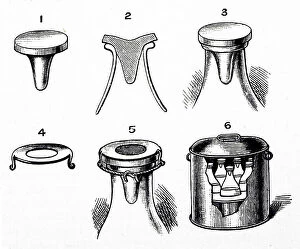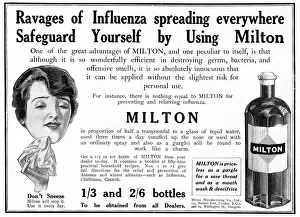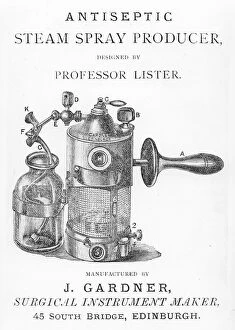Sterilising Collection
"Protecting Lives: The Power of Sterilising in History" Step back in time to 1918, when the world was battling the deadly influenza pandemic
All Professionally Made to Order for Quick Shipping
"Protecting Lives: The Power of Sterilising in History" Step back in time to 1918, when the world was battling the deadly influenza pandemic. An advert for Milton against influenza captures the urgency to safeguard lives during this devastating outbreak. In bustling Paddington Street, London, amidst the chaos and fear, Mrs Lawrence and Mrs Mason were on a mission. They diligently carbonised garments for troops during World War I, ensuring that soldiers remained safe from infections on the battlefield. Meanwhile, thousands of miles away on the Western Front in France, another battle was being fought – one against contaminated water. Witness the purification process as brave soldiers strive to provide clean drinking water for their comrades amidst war-torn landscapes. Traveling back further in time to Germany in the 1880s unveils early disinfection techniques pioneered by Listers steam spray. This revolutionary method laid foundations for modern sterilisation practices we rely upon today. But sterilisation wasn't limited to medical settings alone; it extended its reach into various industries. Discover how shaving brushes were meticulously made with utmost hygiene standards or witness cans being sterilised at a fish cannery before they reached our tables - preserving both taste and health. The concept of harnessing solar energy even found its way into cooking devices designed for sterilisation purposes. Marvel at an artwork showcasing a solar cooking device that not only cooked food but also ensured it was free from harmful bacteria. Yet sometimes nature itself can unleash powerful forces beyond our control. Imagine Earth being struck by a gamma ray burst – an astronomical event capable of altering life as we know it. In such moments, sterile environments become crucial sanctuaries protecting us from unseen dangers lurking outside. Finally, let's not forget those who dedicate their lives to caring for others' well-being - nurses like those seen at Hendon Medical Centre armed with advanced equipment ready to combat any threat through meticulous sterilisation protocols. Throughout history and across diverse contexts, the power has been a constant force in preserving lives.










